Your Sons

Minoxidil is most commonly known as one of only two clinically proven treatments for hair loss.
It was actually first approved as a tablet in 1979 to treat patients with high blood pressure. While the tablets worked for their intended purpose, patients also started noticing a curious side effect: the regrowth and improvement of their hair.
Researchers investigated this further and discovered that as a topical medication, Minoxidil was particularly effective at halting hair loss and, in some cases, regrowing hair. By 1988, the FDA had approved the medication as a treatment for hair loss and the rest, as they say, is history.
Today, millions use Minoxidil daily to combat male pattern hair loss.

In simple terms, Minoxidil increases blood flow to the scalp, providing hair follicles with vital nutrients and oxygen. This nourishment gives damaged follicles the opportunity to recover from the damage caused by male pattern hair loss.
If successful, consistent Minoxidil consumption could deliver results in between 6-12 months.

Hundreds of studies have been made on hair loss treatments, but the only two treatments that have been clinically proven are Oral Tablets and Minoxidil.
Sons is the only UK license holder for both.
Topical Minoxidil is a twice-daily medication. The recommended dose is to spray 1ml/10 pumps, ideally in the morning and evening. Your hair and scalp must be dry when applying the spray. Spread the solution across the treatment area using your fingertips, then wash your hands.
As with all treatment, consistency is key. Results are typically seen after six months so you really do need to keep going with it in order.
Keep up your routine to see the best results.
Changes may only just be visible

Some men will shed fine hairs, this is normal and temporary
Hair may have considerably slowed or stopped completely

You may see signs of regrowth, particularly around the crown
Miniaturised hairs will be replaced by thicker, healthier hairs

Gradual improvement to hair density over time
Sons’ Minoxidil hair loss spray reactivates and revitalises shrunken hair follicles by increasing blood and oxygen flow to the scalp.
View product
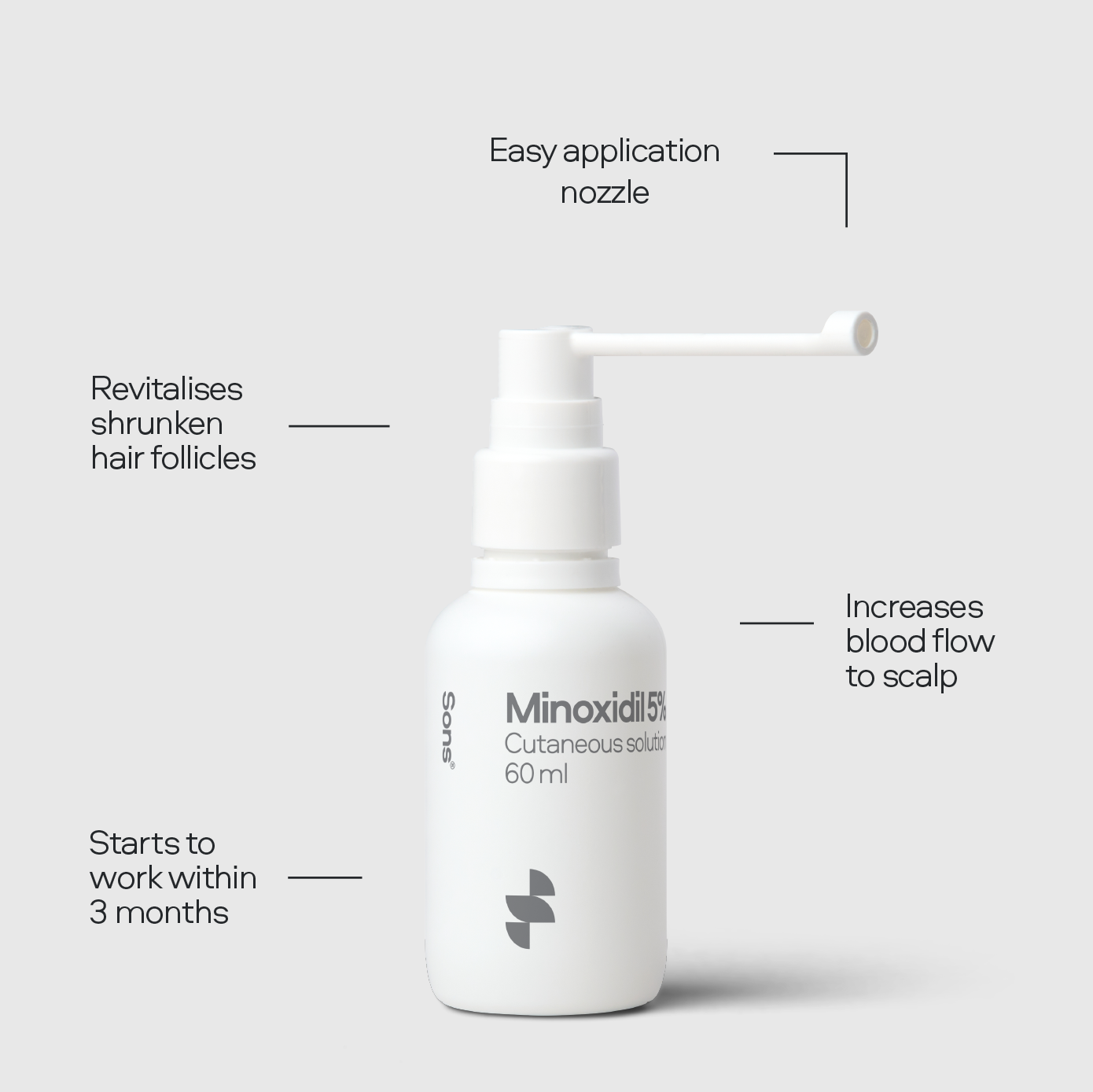
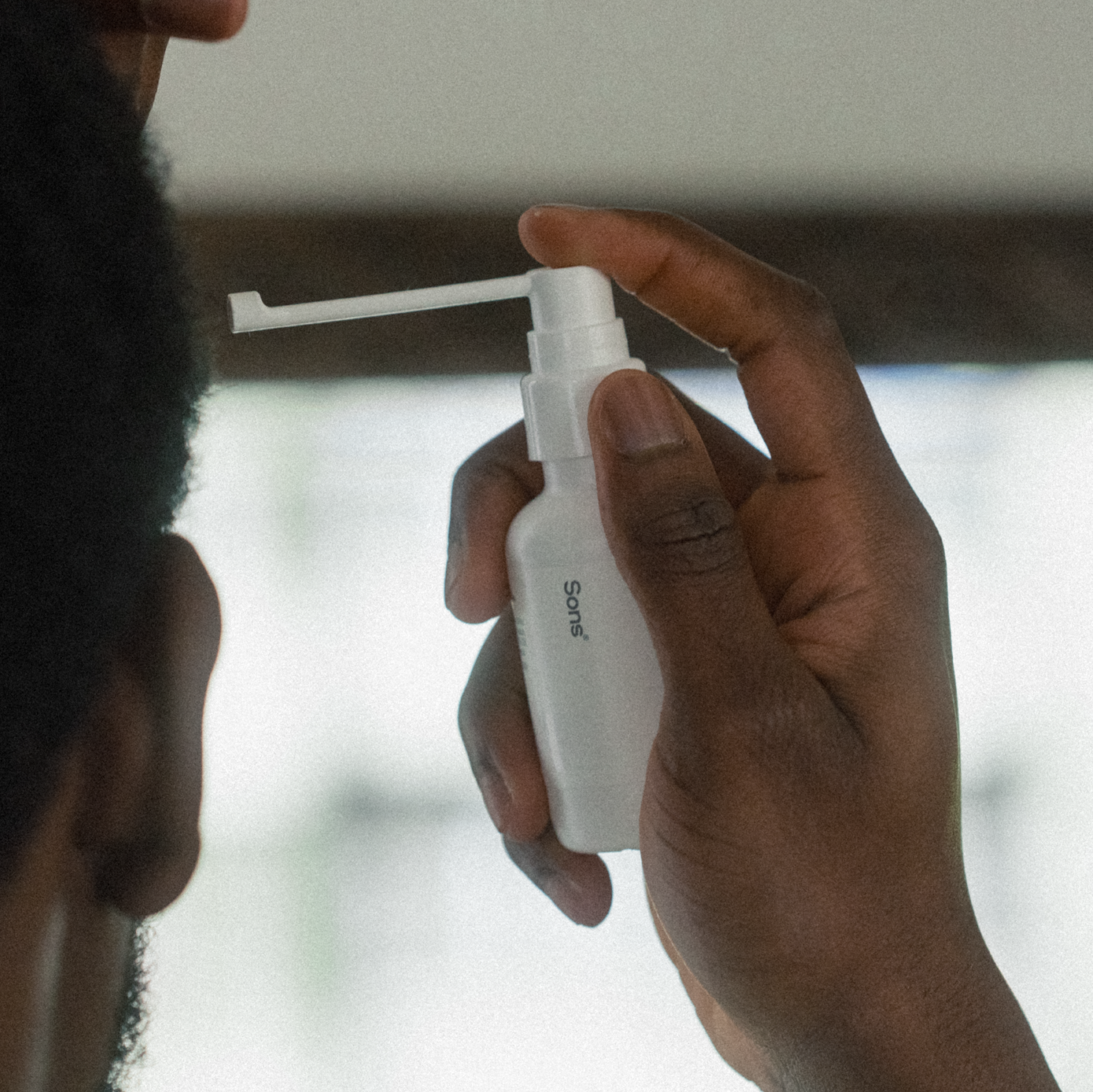
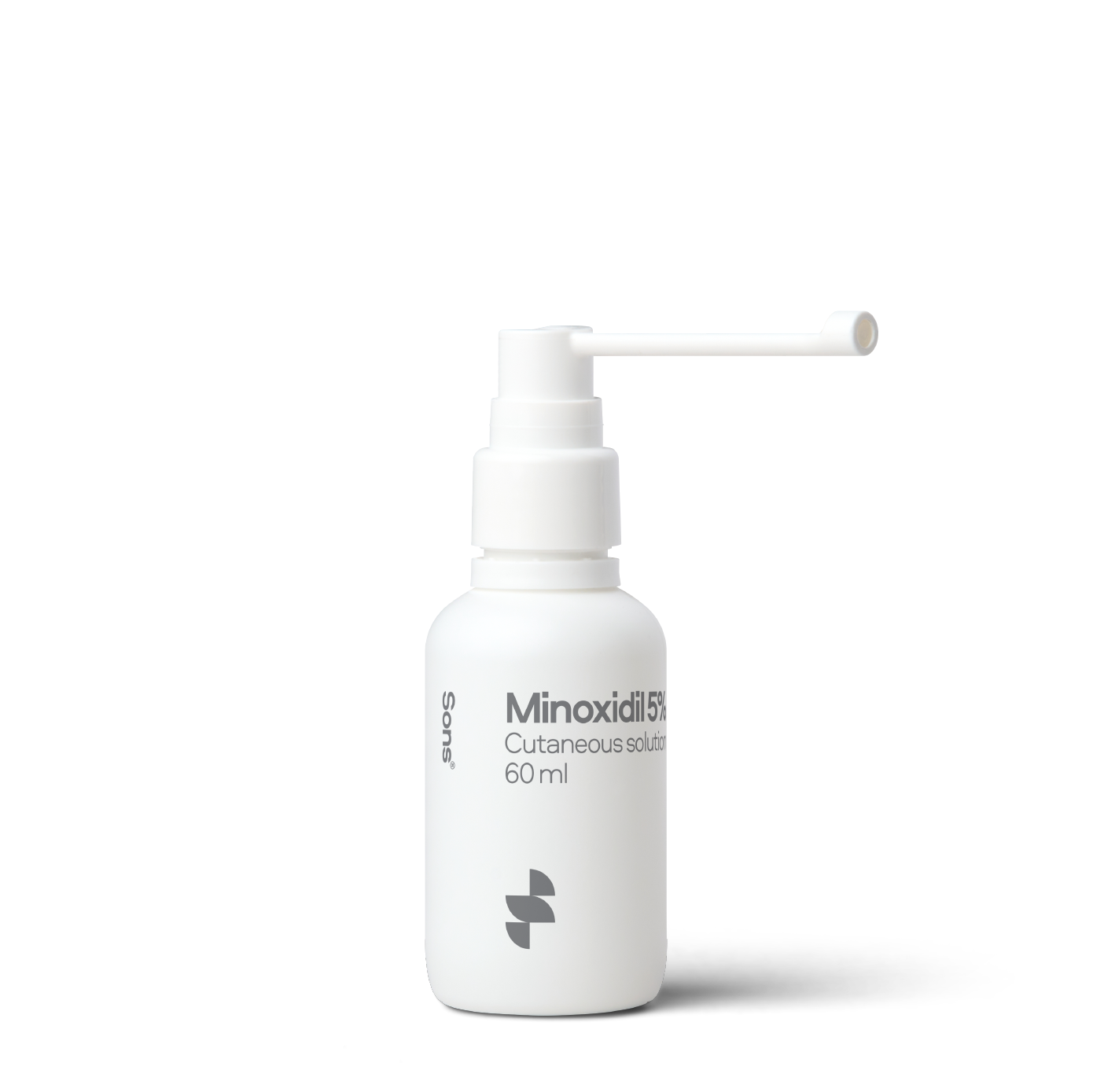
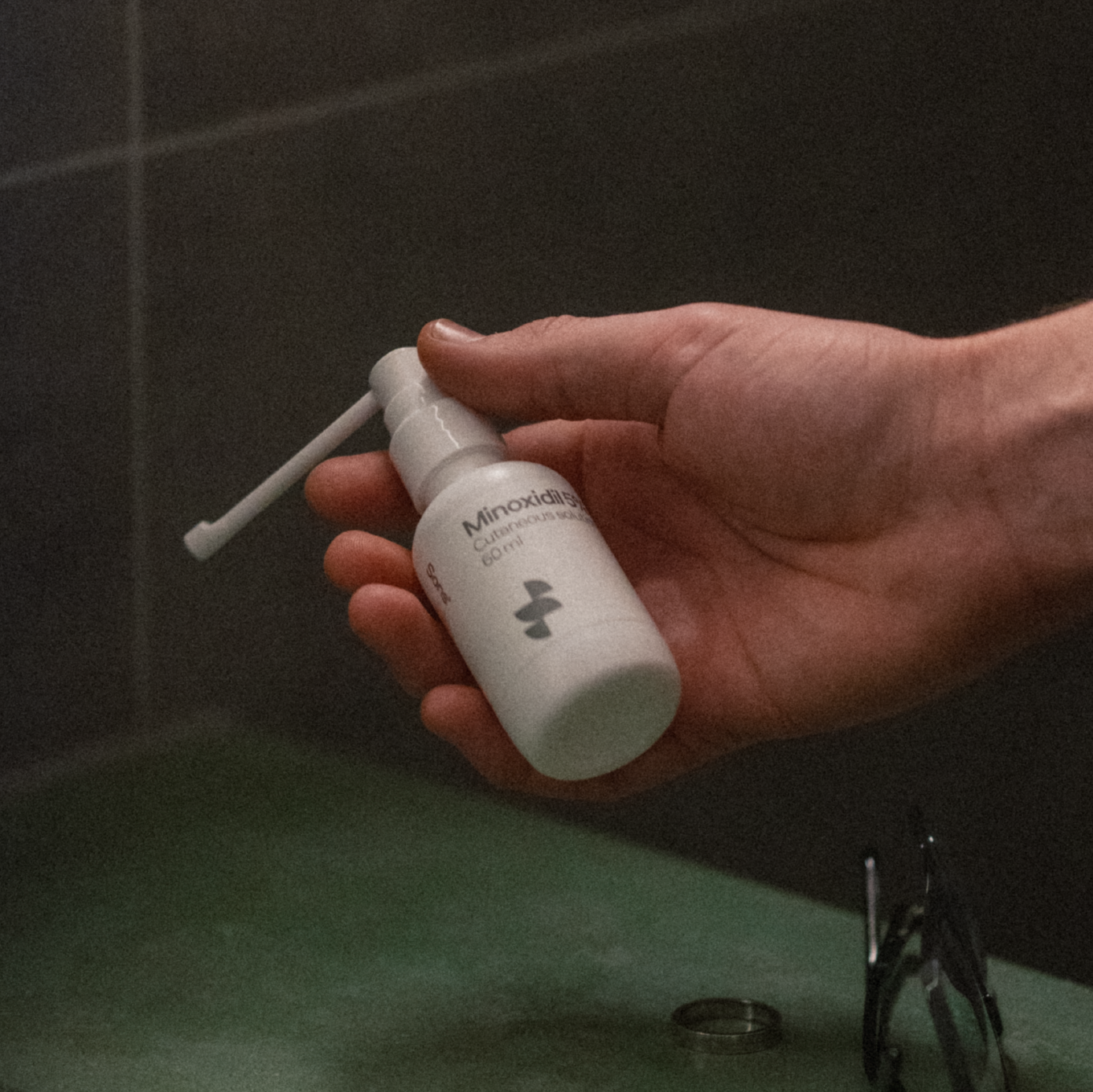
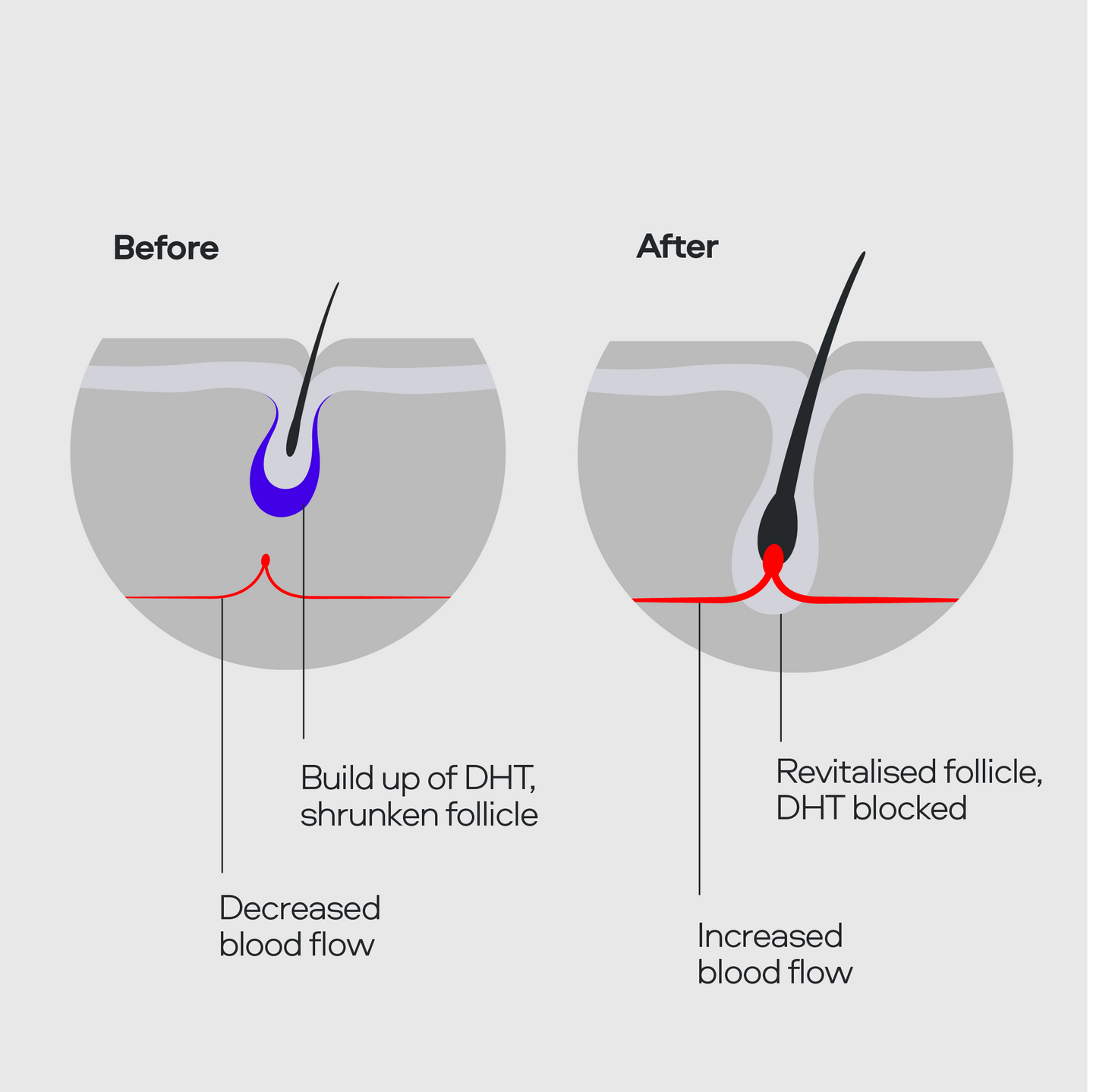
Does Minoxidil work?
Yes - Minoxidil has been medically proven as an effective way to treat hair loss. Medical data has shown that Minoxidil can help to regrow and revitalise hair around the scalp. While Minoxidil has been proven effective in a variety of studies, the rate of its success is still down to consistent use. If you want to experience the best results, using Minoxidil with Oral Tablet and other supplements in our treatment plans have the potential to halt your hair loss and, in many cases, reverse it.
Does Minoxidil have side effects?
Like any medication, Minoxidil has the potential to cause side effects, however they are thankfully very rare. Minoxidil works The most common side effects are scalp irritation and redness, which could be a sign of an intolerance to Minoxidil or one of its ingredients. As you start taking Minoxidil, you may notice a period of increased shedding - with consistent usage this usually settles down and it is a sign that the Minoxidil is starting to work, by older, miniaturised hairs making way for thicker healthier hairs to regrow. There is no evidence from clinical studies that suggest that using Minoxidil over a long period of time can cause negative side effects. t’s always best to familiarise yourself with the potential side effects, even with the very low chances of developing them.
Does Minoxidil regrow hair?
While consistent use of Minoxidil is able to stop a receding hairline, evidence also indicates that it can regrow hair. Minoxidil does this by increasing the blood flow to the scalp and therefore increasing the number of nutrients and oxygen available to your hair follicles. These follicles then become healthier and revitalised, giving your hair the perfect foundation to regrow.
How to apply Minoxidil to long hair
It might initially seem more difficult to apply our topical Minoxidil solution if you have long hair, but that isn’t the case. Our 5% Minoxidil has a handy actuator pump, which helps you direct the Minoxidil to the areas on the scalp that need it, rather than through the length of your hair. First things first, make sure your scalp is dry before applying, before pulling or splitting your hair in the parts that are receding or thinning the most (usually the crown or the temples). Remember - staying consistent with your Minoxidil and applying twice a day will give you the best results in the future.
Does Minoxidil slow hair loss?
Yes - evidence has shown that Minoxidil is able to slow down the rate of hair loss and, in some cases, even regrow it. The medication does this by increasing blood flow to your scalp, therefore giving your hair follicles the opportunity to repair. While using Minoxidil on its own has the potential to produce results, when used alongside other medications in our treatments (such as Oral Tablet), your chances get a big boost.



Browse all articles

When it comes to treating male pattern hair loss, Minoxidil is one of two medications clinically proven to be effective...